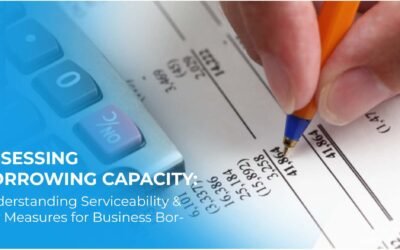Understanding Loan Repayment Structures and Interest Rates in Business Lending

Understanding Loan Repayment Structures and Interest Rates in Business Lending
When it comes to business lending, understanding loan repayment structures and interest rates is essential. The duration of a loan, repayment types, and interest rate components can significantly impact the financial aspects of borrowing. In this comprehensive guide, we will explore different loan terms, repayment types, and interest rate structures in business lending. By gaining insights into these aspects, borrowers can make informed decisions and secure the financing that best suits their needs.
Loan Term Guide
Determining the loan term is crucial when structuring commercial lending. It involves negotiations between the lender and borrower to strike a balance that satisfies both parties’ requirements. The loan term is influenced by factors such as the type of property, cash flow, and collateral provided.
Here is a general guide for different loan terms:
- Residential Property: Up to 30 years
- Commercial Property: Up to 30 years
- Business Cash Flow (GSA): Up to 10 years
- Business Equipment: Up to 5 years
- Unsecured: Up to 5 years
Commercial Property and Weighted Average Lease Expiry (WALE):
Financing commercial properties with multiple tenancies requires understanding the concept of Weighted Average Lease Expiry (WALE).
WALE measures the average time until all leases in a commercial property expire. Lenders commonly use WALE to assess the stability of rental income streams and determine the loan term they offer.
Three Common Repayment Types:
Principal & Interest (P&I)
P&I repayments are designed to fully repay the loan balance after a specified term. Repayment conditions vary based on the type of facility, and there is generally less flexibility compared to home loans.
Interest Only (IO)
IO repayments do not include principal repayment for a specified period (usually up to 5 years). These loans typically carry higher interest rates. Once the IO period ends, the remaining term will be the total term minus the IO period, leading to higher residual repayments.
Interest Capitalization (ICAP)
With interest capitalization, no repayment requirements exist until the end of the term. Instead, the bank adds interest charges to the loan balance over time.
Understanding Interest Rates: Interest rates in commercial finance depend on the borrower’s relative risk of default and are determined through risk grading systems. Various components contribute to the interest rate structure:
Base Rate:
Commercial loans are often based on a benchmark rate at which the financier borrows money, such as the Bank Bill Swap Bid Rate (BBSY).
Margin:
The customer margin is determined by factors like character, capacity, and capital. It is added to the base rate to determine the interest rate.
Line Fees:
Payable to maintain credit availability, with interest charged only on the loan balance.
Interest rates offered are influenced by factors such as the purpose of funding, risk grading, collateral quality, Loan-to-Value Ratio (LVR), and the capacity to service the debt.

Loan Types
Variable Rate Loan
Offers flexibility with extra repayments, easier refinancing, and benefits from interest rate decreases. However, borrowers are exposed to potential interest rate increases.
Fixed Rate Loan
Provides set repayment amounts for a specific period, allowing businesses to budget effectively and offering protection against interest rate increases. Prepaying or discharging the facility may incur break costs.
Conclusion
Understanding loan repayment structures and interest rates is crucial for businesses seeking financing. By considering the loan term, repayment types, and interest rate components, borrowers can make informed decisions that align with their financial goals.
Whether it’s residential or commercial property, business equipment, or unsecured loans, exploring different options and working closely with professionals can help secure the best financing solution.
Book a meeting with us today by visiting our website. Our team will work closely with you to assess your financial position, understand your industry experience, and help you secure the financing necessary to fuel your business growth.
Disclaimer: The information provided in this blog is for educational purposes only and should not be considered financial advice. Always consult with a professional financial advisor or lender for specific lending decisions.





